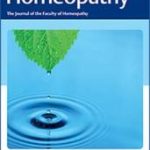Paolo Bellavite
La medicina: arte terapeutica e scienza sperimentale
J Med Person, 2006, 4, 4
Medicine can be defined both as an art and a science, but often these two components have been separated or even put in conflict. In the pre-scientific era, and still among some primitive people, the therapeutic art was practiced by healers, shamans, witch-doctors and so on. By means of acute observations, the school of Hippocrates understood that diseases are natural phenomena and symptoms are often expression of healing power (physis). Then, for centuries, empiricism was the most widely used approach, codified by various traditional schools. After the scientific revolution (XVI-XVII centuries) and especially following the studies of Claude Bernard, medicine became an experimental science and a source of universal knowledge. A mechanistic and reductionistic way of thinking prevailed and individual care was considered less important than statistical evidence. Notwithstanding the success of this approach, the dream of a fully scientific approach to health and disease failed, for a number of reasons, and there is now a renewed interest in the artistic character of medical activity. The art of medicine, to be rationally integrated with scientific knowledge, may be considered according two perspectives: the awareness of the complexity of medical activity, requiring more individualized approaches, and the search of meaning in the experience of a persons illness.





